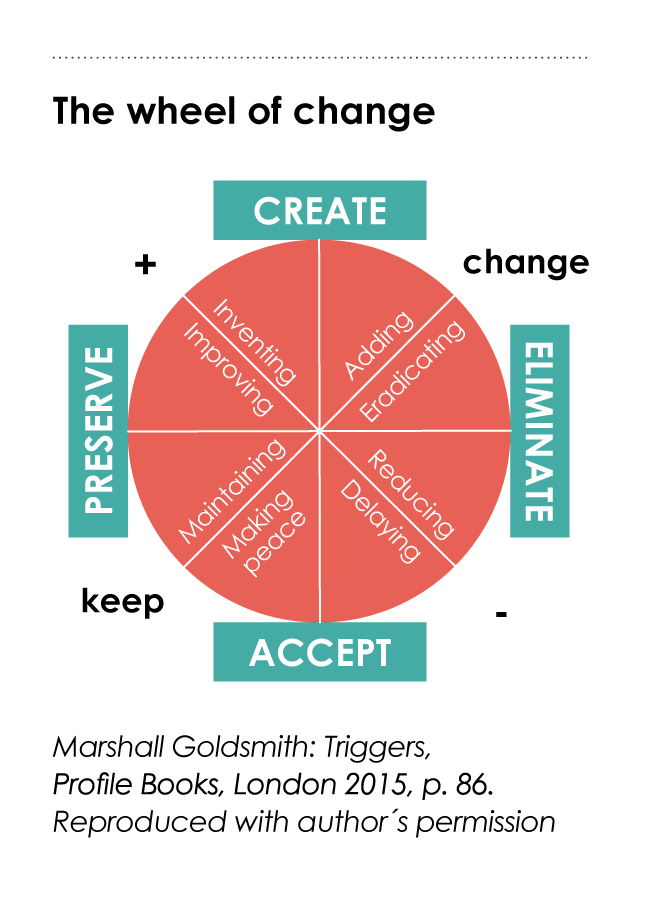Goodbye SMART goals, welcome OKRs goals
SMART goals - Specific, Measurable, Attainable (Agreed, Actionable, Aspirational), Relevant (Realistic), Time-based - have been a mantra for decades. However, now we should re-think the concept.
I explain the weakness of SMART goals to my clients by giving them a riddle: “Five frogs are sitting on a log. Three of them decide to jump off. How many are left?” The most common answer is: “Two.” Wrong! All five. Decision and action are two different things. It is similar with SMART goals.
OKRs stands for Objectives Key Results. The objectives should be qualitative, not measurable. Key results are extremely measurable and very specific outcomes, i. e. what must be done to achieve the objective. Three years ago, I coached three sales reps of a multinational technological corporation. The Sales Director was not happy with their performance – despite the fact that all the Sales Reps met SMART goals. Turning SMART goals into OKRs dramatically increased win-rate within a few months. Here are two examples in sales process:
Proposal presentation: Objective One: Rehearse proposal presentation. Key results: Presentation in front of experienced colleagues. Possible objections are identified. Answer to each objection proposed. Objective Two: Present proposal & reinforce values & USP. Key results: Attendees prove USP targets their needs. All objections were managed satisfyingly and attendees proved that.
Performance Review is useless, Review and Retrospective matters
During the last 30 years performance management has not changed too much. The main changes concerned shortening the period from once a year to July and January rituals, and then to quarterly reviews.
Performance review improvements focused on three areas: 1. Preparation including a thorough review of one-year (six-months, three-months) subordinate´s performance juxtapositioned to agreed SMART goals. 2. Creating a psychologically safe environment. 3. Sequencing questions, e.g. at the very beginning the subordinate should give her/his view on performance during a period.
Agility, especially Scrum framework, has introduced a more effective, less stressful, simpler, and more development-oriented approach: Review and Retrospective. The first change in comparison to traditional rituals is that everything is carried out within a work group/team. The second change is a significant shortening of the period between two reviews. I recommend a two-week period. However, the most significant change concerns the ritual itself. On Monday morning meetings each team/group member says what she/he plans to do in the next two weeks. After two weeks, each team/group member says what she/he has done (Review) and what she/he has done well, according to expectation, what could have been done better and how. The manager and the colleagues can ask, explain, offer support, etc.

Development Centers have limited added value
In 1990, two business academics, C. K. Prahalad and Gary Hamel, teamed to write one of the Harvard Business Review’s most influential articles on the nature of the modern firm: The Core Competence of the Corporation. Core competencies are seen as processes that are central to the way an organization works. Soon after companies around the world created a long list of their “core competencies”, designed sophisticated Developmental Centers exercises and had managers assessed based on their “core competencies”.
A gap between “desired” and “current” position, usually on a 5-point (or 7-point) scale was declared as “manager´s developmental needs”. It sounds like a good idea but…
A possible Developmental Center result can be: Core Competency Decision Making, Key Action: Uses sound judgment to make good decisions based on information gathered and analyzed. Desired level 6-7, current position: 4. Howsoever experienced coach, consultant, soft skills trainer you are, you have almost no anchor what exactly should be developed and how.
M. Goldsmith in his book Triggers: Creating behavior that lasts, becoming the person you want to be offers a simple, easy, but very powerful tool: The Wheel of Change.
Ask the manager´s team to make their manager´s qualitative assessment in four areas: what to eliminate, preserve, accept, and create in any core competency key action. You will be very surprised how qualitative assessment differs from manager to manager, even within the same department. There hardly is a better tool for competencies development. You do not need sophisticated exercises and skilled assessor to reveal the gap between desired and current position.
Challenge for HR people
Regardless how ideas outlined above seem to by simple and easy to follow, the opposite is true. Implementing will be very challenging as it requires changing the mindset of an over-critical mass of the company’s managers. The condition sine qua non is trust! If company executives are not trustworthy, people will see any initiatives as another trick to increase their productivity.
HR people should “sell” ideas to the Board and subsequently persuade the Board not to intervene in a change process, which should start at the bottom. Ideally in a volunteering team which can choose where and what to start with. Positive outcomes will come within several weeks. Volunteers can become its ambassadors.
Conclusion
The Post Pandemic situation will require different approaches in almost everything. Doing things the same way as in previous years will bring less. Goal setting, Performance review and Leadership development are a very important part of HR duties in Learning and Development. Adopting some ideas mentioned in this article will shift companies to new horizons.
Peter Benkovič, Partner, Maxman Consultants



Follow us